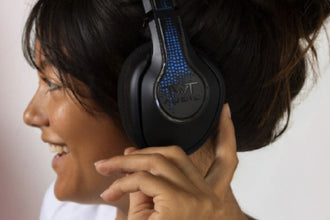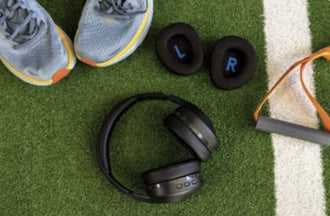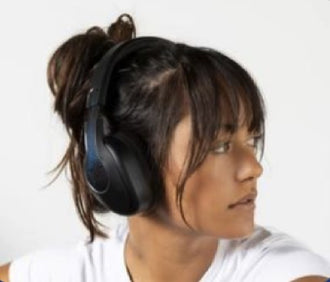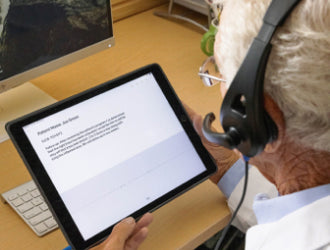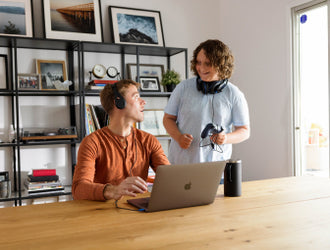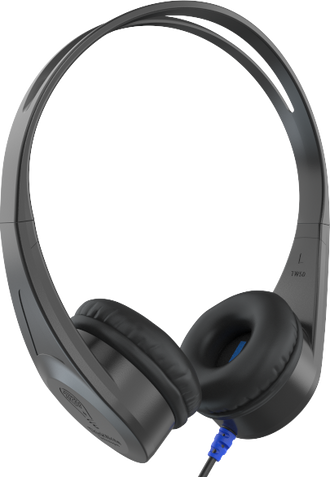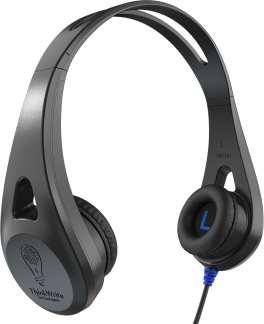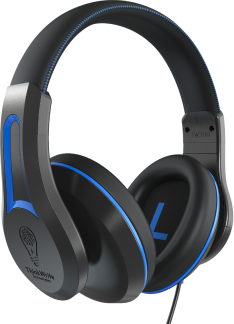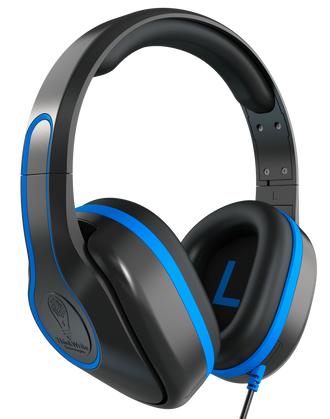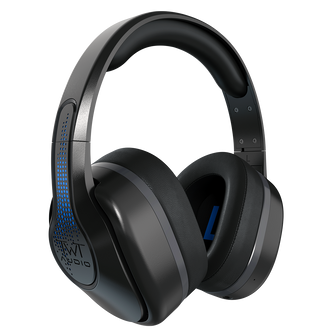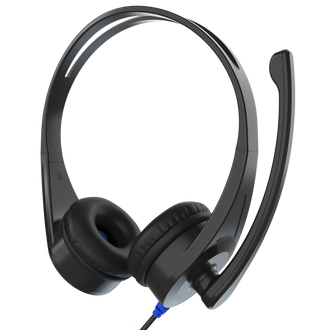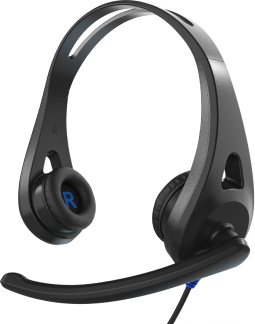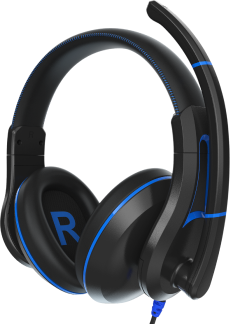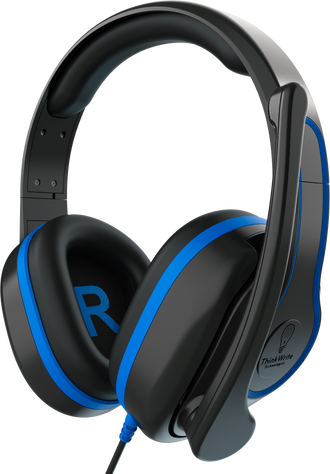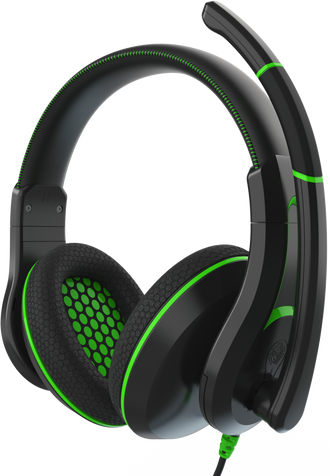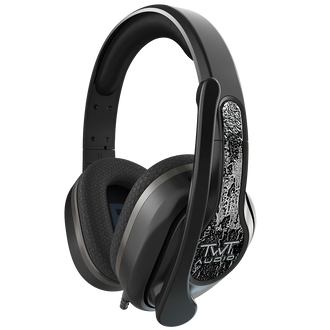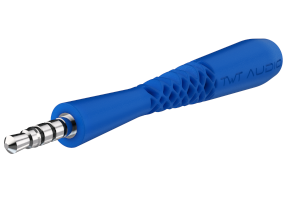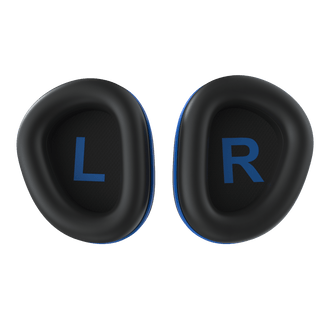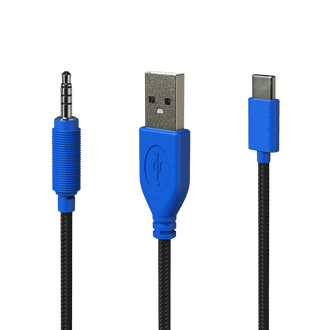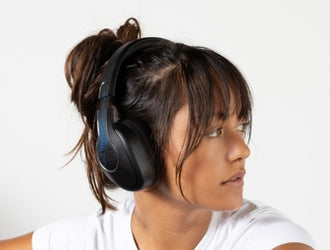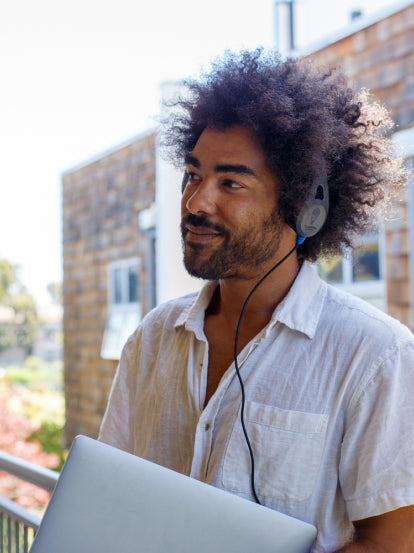Headphones and headsets have become a crucial part of our daily lives, such as being necessary in educational settings, professional settings, and even recreational use. Once you have made the investment in quality and long-lasting headsets and headphones that ticks all of your boxes, you will want to ensure they stay in impeccable condition for long-lasting use. Here are ten things you should never do to your headphones or headset to protect your device and yourself:
1. Yanking the Cable
This is a simple rule, yet one of the most common headphone mistakes people make when utilizing their headset or headphones. Whether you’re hopping off a business call that ran over time or in a hurry to make it to your next class, it can seem like no big deal to yank your cable out of your device and carry on. Unfortunately, incorrectly pulling the cable can cause damage to your headphone’s internal wiring and external connectors. This impact will diminish the longevity of your product. To properly disconnect, grasp the cable at the connection/adapter and gently pull it out of the device. This will ensure there is no pulling, tugging, or breakage happening within the cable and adapter connection. (Not to mention, you can also damage the input of your audio device if you yank/exert force on your headphone cable connection to remove it). If you find yourself forgetting to unplug before putting away your headphones, try our breakaway adapter to help prevent pin breakage.
2. Excessive Bending of the Cable

If you haven’t noticed, the cable is actually the most fragile component of the headphone - we can’t say enough about them! TWT Audio encases the cables inside a tightly woven fabric material to help prevent damage from chewing, and when treated properly, there’s no reason a cable will cause any issues. However, mistakes can be easily made if you’re not mindful. Twisting, pulling, folding, chewing, bending, or incorrectly coiling your headphone cable can happen in any classroom, office, or home. Bending the cord at a sharp angle can cause a short or full break of the elements inside, rendering your device useless or hearing out of one ear only. Cables are best secured with a twist tie, and the cables are wrapped in the shape of a loose loop. Keep them in a safe and secure position for storage or transport.
3. Not Using the Right Adapter
There are now many adapters on the market for every piece of technology, so it can understandably get confusing to know which one to use for your devices. It’s important to note that using the wrong type of adapter for your headphones or headset can not only make for a worse listening experience but can actually damage your product. Incorrect voltage can wreak havoc, causing sound distortion, battery damage, overheating, and more. The best case scenario is to use the accessories included with your product or replace them from the same company to ensure it’s the correct way to go for your specific need. To circumvent the entire cable headache, you can always use the REVO TW340 wireless headphones or REVO series - modular wired headphones that enable you to adapt your headphones to each device you have with interchangeable USB-A, USB-C, and 3.5mm connections.
4. Improper Storage

An important and often discarded tip for extending the lifespan of your headphones or headset revolves around proper storage. It’s common to see people toss their headphones in a pile or loose in a cabinet, possibly with other belongings on their way to their next stop. This is particularly true in a classroom where students may not think twice about headphone storage before moving on to the next activity. It’s best to store headphones or headsets in a clean, dry, and cool environment when not in use. When it comes to the cable - an essential part of any wired headset or headphone - it should be loosely coiled and secured with a twist tie to keep it from tangling up.
An individual storage case designated for your headphones is an ideal solution to guarantee optimal care, especially when traveling. If that solution isn’t right for you or you need bulk storage, some creative solutions are storage bins with individually labeled bags or hanging storage with see-through pouches/storage hooks that can adhere to a wall.
5. Exposing to Extreme Temperatures
Be mindful of the conditions in which you leave your headphones and headsets. Internal elements, such as lithium batteries (present in most wireless headphones), cannot withstand extreme hot or cold temperatures. Prolonged exposure to high or low temperatures can cause varied results, from shorter battery life to complete shutdown and, in rare cases, even fire. Placing in direct sunlight for too long can cause deterioration and warping. Your headphones and headsets are best stored in an area that remains comfortable at room temperature or slightly below.
6. Exposure to Moisture

Like most products with electrical components, moisture should be avoided as much as possible - unless otherwise specified. When liquid makes its way inside headphones or headsets, it can corrode metal audio components, leading to sound distortion and device failure. This can include weather, excessive sweating, extreme humidity, accidental spills, etc. We know it’s tempting, but don’t take your headphones into the shower unless they are waterproof. The moisture and humidity will cause damage, and shower acoustics are best suited for a cappella performances anyway. If your headphones or headset are exposed to moisture, make every effort to get them dry as soon as possible. Wipe any excess liquid with a soft, clean cloth and detach any removable pieces to dry. Allow components to air dry for 24-48 hours without using them.
7. Ignoring Manufacturer Instructions
It’s exciting to tear open a new package and get right to using your new headphones or headset without going through the information pamphlets included with the packaging. What could be new anyway, right? They are just headphones. Alas, you might be tossing away an important piece to the puzzle of long-lasting gear. Yes, the oft-forgotten yet oh-so-integral instruction manual. Instructions from the manufacturer will include any pertinent information regarding your headphones or headset things that may help extend the life of your product. For example, how to care for or properly charge your device, how to replace ear cushions, and more. We recommend that adults demonstrate proper headphone care before young listeners use their new headphones to encourage correct use and care. Note: Wired headphones need no special setup. They are plug-in and play!
8. Using High Volumes

Listening to your headphones or headset at excessively high volumes is bad for not just your hearing but for the life of your product. When sound comes out of speakers, to put it briefly, it causes a vibration that produces the sound. Too much vibration equals too much movement, which can cause components to shift, causing noise distortion. Listening on max volume for too long can also overload internal wiring, causing overheating and reduced sound quality. While it’s tempting to close your eyes while the sounds of Taylor Swift blast straight into your eardrums, no volume setting is going to transport you to the Eras Tour, so you might as well save both your ears and your headphones by keeping the volume at a reasonable level. Luckily, TWT Audio products help limit the output level students and enthusiasts can listen to.
9. Sharing Headphones
While sharing is a nice idea in theory, it’s not always in either party’s best interest - I'm looking at you, earbuds. Sometimes, it can even be harmful, such as when sharing your headphones or headsets with others. First and foremost, hygiene is a concern. Bacteria can easily spread from person to person via ears, causing illness or infection that could otherwise have been prevented. Additionally, allowing someone else to use your device takes the control of its care out of your hands, potentially contributing to wear and tear that can diminish the quality and lifespan. If sharing your headphones or headset is necessary, disinfect them before handing them over and again after they have been returned. This can be done using a damp, soft towel or antibacterial wipe to wipe it down, allowing it to dry before use. Sharing is caring, but only about feelings and toys, not ear wax and germs.
10. Neglecting Regular Cleaning

No one wants to add more to their regular to-do list, but trust us when we say - it’s worth it! If you have a skincare routine, you should most definitely have a headphone hygiene plan. Even if your headphones or headset look clean to the naked eye, it’s important to clean them routinely as part of ongoing headset maintenance. Headphones and headsets spend much time near breeding grounds for bacteria, such as the ears, mouth, and hands. We often take them with us on the go - in classrooms, at the gym, to the office - picking up dirt and germs along the way. Headphones then go over the ears, where the dark, warm environment can catalyze said germs. No one wants that. If that visual isn’t enough to encourage cleaning, dirt and debris can also impact the quality of the headphones or headset, causing muffled sounds, rattling, and damaged pieces. To keep them properly cleaned, you can lightly dampen a clean cloth with rubbing alcohol or water and gently wipe down the entire surface of your device. Allow to air dry. Plan to clean your headphones or headset at least once a week or whenever you see dirt on them. The REVO series by TWT Audio utilizes patented Stealth Release™ technology for easy ear cushion cleaning. Simply release the internal Stealth Release™ tabs with no tools necessary, remove, and clean. Note: alcohol can dry out leather and imitation products and cause discoloration.
Conclusion:
As noted above, properly caring for your headphones and headsets is essential to maximizing their lifespan and ensuring your best audio experience. By avoiding these common mistakes — like yanking cables, exposing your devices to extreme temperatures, and neglecting regular cleaning — you can protect your investment, your health, and enjoy high-quality sound for years to come. Remember, a little attention to detail in handling and storing your audio equipment goes a long way (especially the cable!). Protect your gear and your ears, and your headphones will continue to deliver the exceptional performance you expect. Also, this should be understood without being said, but just in case it is not, DO NOT throw your headphones. It may seem fun in the moment, but this can easily dislodge and damage internal components.

Frequently Asked Questions About Proper Headphone/Headset Care
-
Why is it important to avoid yanking the cable of headphones?
Answer: Yanking the cable on your headphones can cause internal elements to break or become damaged. Remove your cable by holding on to the plug itself and gently pulling it straight out.
-
How do elements affect headphones?
Answer: Moisture can get inside your headphones or headset. This can lead internal elements to corrode, and then stop working. If left in direct sunlight or excessively cold, materials can become warped or cracked.
-
What are the risks of using headphones at high volume?
Answer: Using headphones at high volume can cause damage to your hearing, as well as damage to the device itself through excessive vibration and overheating.
-
How should I store my headphones to prevent damage?
Answer: The best way to store your headphones is by gently coiling the cable and securing with a twist tie. Place in a secure case designated for your device, and keep in a cool setting.
-
Can sharing headphones cause damage or hygiene issues?
Answer: Yes, sharing headphones can cause both damage and hygiene issues. Improper use can cause wear and tear that can create damage. Sharing devices can easily spread germs and bacteria from person to person.
Quality Headphones and Headsets Are Worth The Investment
Protect your investment and enhance your listening experience with our durable and high-quality headphones and headsets. Visit twtaudio.com to explore our range of products designed to withstand the rigors of daily use, especially in educational settings. Take care of your audio devices to ensure they provide you with the best sound quality for years to come.
If you have any questions or need further assistance with caring for your headphones and headsets, please don't hesitate to reach out to us. At TWT Audio, we are committed to providing you with the best support and guidance for all your audio needs. Contact us through our website or email us at info@twtaudio.com. We're here to help you get the most out of your audio devices.

